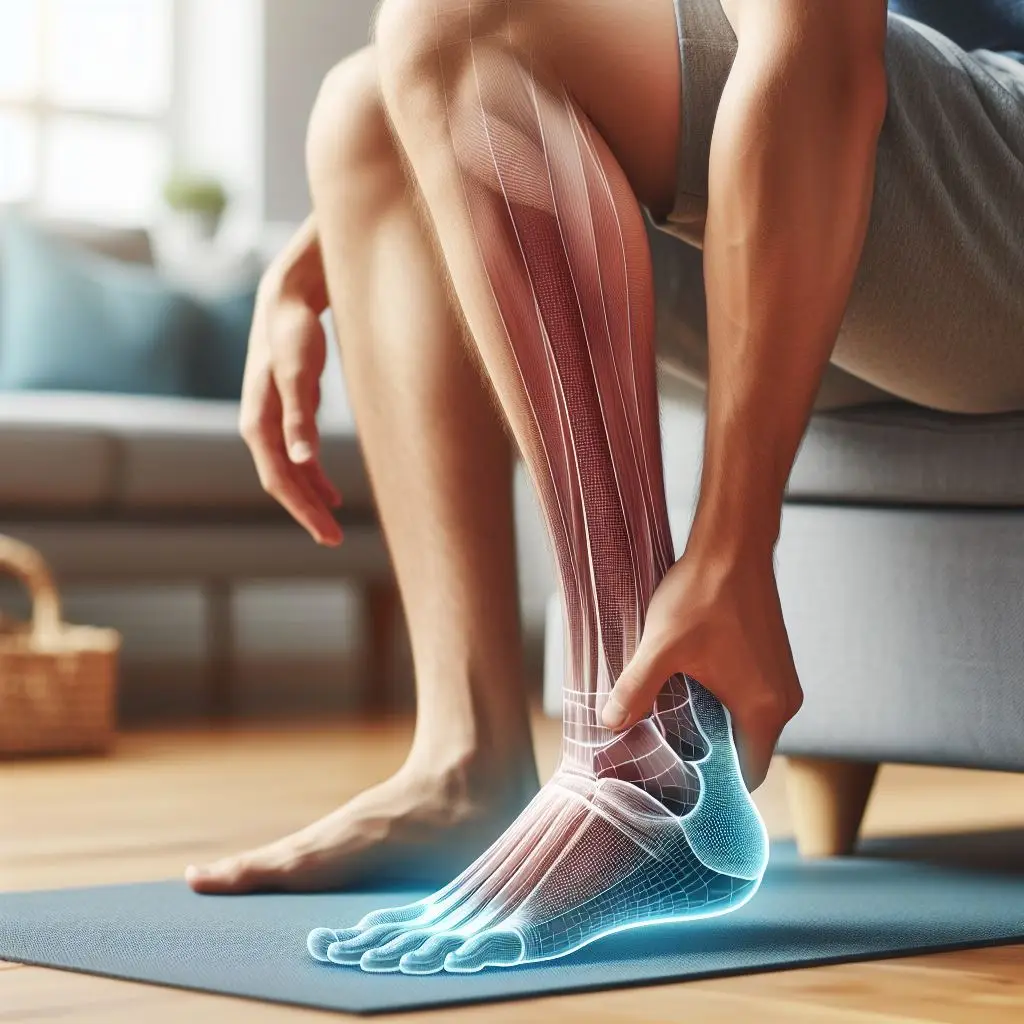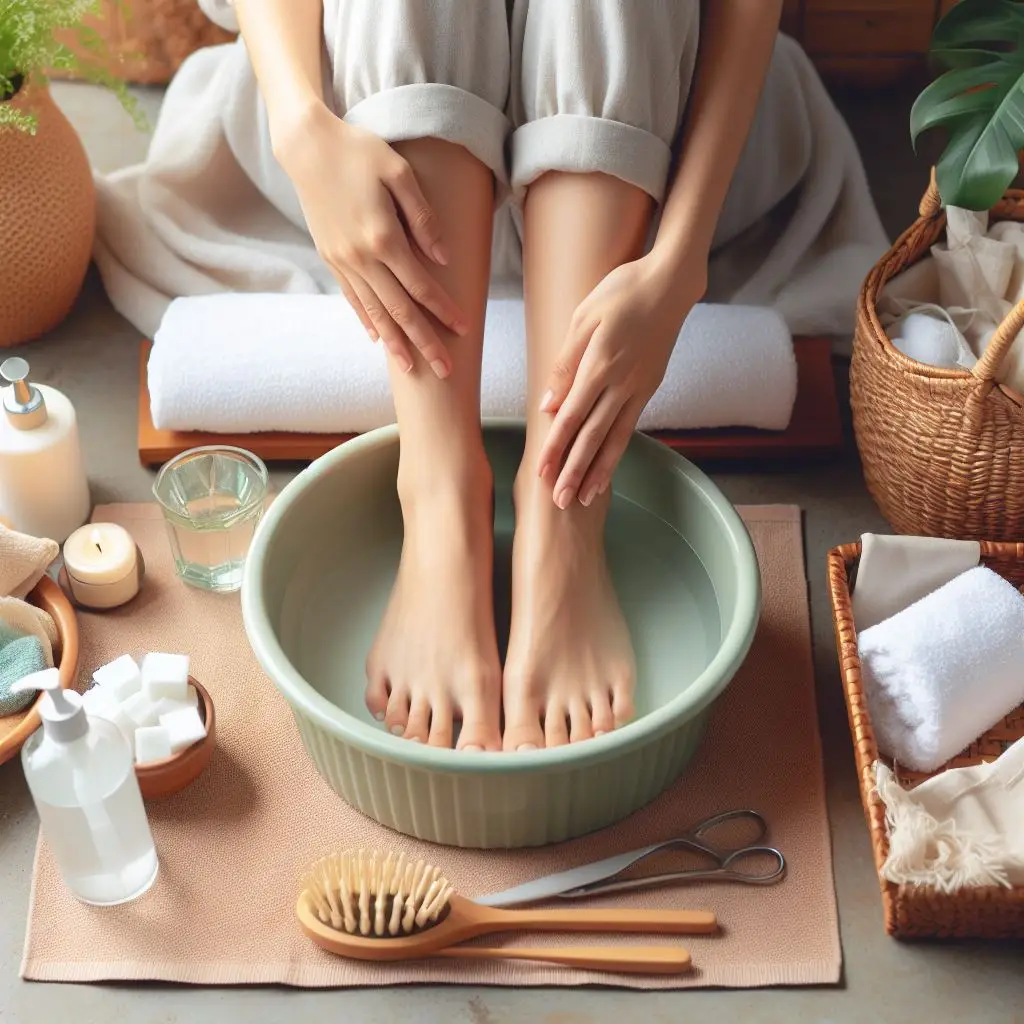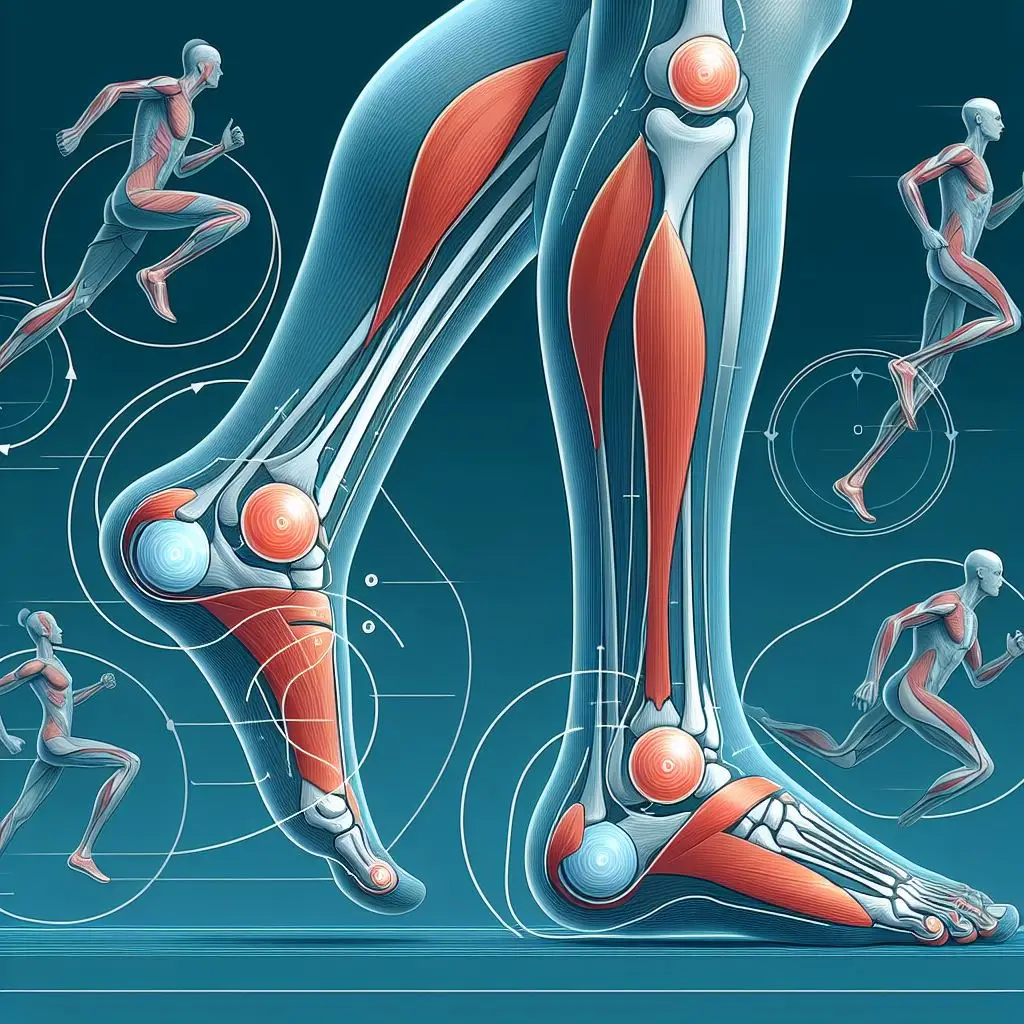
Foot health is more than just a topic for athletes or fitness enthusiasts.
Everyone needs to pay attention to their feet. Think about it: our feet are the foundation of our physical activities. They carry us through life’s daily hustle, from running marathons to just walking around the grocery store.
But here’s the thing: common foot problems can really throw a wrench in our daily lives and fitness routines. Issues like sore arches or blisters might seem small, but they can lead to bigger health setbacks. Ignoring them isn’t a smart move.
That’s why we’re diving into the world of foot health and exercise. We’re not just talking about avoiding problems; we’re focusing on proactive steps to keep your feet happy and healthy.
Whether you’re a seasoned athlete or someone who just enjoys a leisurely walk, this article is your go-to guide. We’ll share the best practices and top tips to ensure your feet are in top shape for any physical activity. So, let’s step into this journey together and give our feet the care they deserve!
Understanding the Anatomy of the Foot
Let’s get down to the basics: your foot’s anatomy. It’s not just a single piece; it’s a complex structure of bones, muscles, and ligaments. Picture this: your foot has 26 bones, over 100 muscles, tendons, and ligaments, and a network of blood vessels, nerves, and skin. It’s like a well-oiled machine, each part playing a crucial role in how you move.
When it comes to bones, think of them as the framework of your foot. They provide the shape and structure. The largest bone, the heel bone (or calcaneus), supports your body’s weight. The long bones (metatarsals) in your foot’s middle connect to the phalanges, the bones in your toes. Then there’s the tarsals, a group of seven bones in the rear part of your foot, including the talus and navicular, crucial for arch support.
Now, let’s talk about muscles and ligaments. These are the movers and shakers. They work together to control movement and maintain stability. Ligaments, those strong bands of tissue, connect bones and support joints. And the muscles? They’re all about movement. From the large calf muscles that attach to the heel via the Achilles tendon, to the small muscles in the foot that help with balance and fine movements.
During exercise, this whole system works overtime. Every step you take, whether running, jumping, or even walking, your foot’s anatomy is engaged. The biomechanics – how your foot moves and bears weight – are critical. It’s a balance of flexibility and stability. Your foot needs to be flexible enough to adapt to different surfaces, yet stable enough to provide support.

Common Foot Problems Related to Exercise
When we exercise, our feet often bear the brunt of the impact. Unfortunately, this can lead to some common foot problems. Let’s dive into a few of them.
First up, plantar fasciitis. This is a real pain in the foot, literally. It’s when the plantar fascia, a band of tissue along the bottom of your foot, gets inflamed. The main symptom? A stabbing pain near your heel, often worst in the morning.
Overuse, like too much running or jumping, often causes it. According to the Mayo Clinic, proper footwear and stretching exercises can help prevent it.
Next, let’s talk blisters. These small, fluid-filled bubbles can be a big nuisance. They’re caused by friction – your shoe rubbing against your skin. While not serious, they sure can be uncomfortable, especially when you’re trying to beat your personal best on the track.
Toenail issues are another common problem. Ever had a black toenail after a long run? That’s usually from your toe hitting the front of your shoe repeatedly. It’s painful and can even lead to toenail loss. Keeping your toenails trimmed and wearing properly fitting shoes can help avoid this.
Lastly, let’s touch on sprains. A sprain happens when the ligaments in your foot, especially around the ankle, are overstretched. A sudden twist or turn can cause it, common in sports with lots of direction changes. The symptoms? Pain, swelling, and difficulty walking. Rest, ice, compression, and elevation, often referred to as RICE, are the go-to treatments for sprains.
Exercise Routines Beneficial for Foot Health
Taking care of your feet is crucial, and the right exercises can do wonders. Let’s jump into some routines that are both beneficial and foot-friendly.
Starting with toe curls and heel raises. These simple exercises strengthen your foot muscles. Toe curls involve curling your toes as if you’re trying to pick something up with them. Easy, right? For heel raises, stand flat and then rise onto your tiptoes.
It’s like giving your calves and feet a mini workout. Fitness experts often recommend these exercises as a great start to building stronger feet.
Now, let’s talk about low-impact exercises. Swimming and cycling are your feet’s best friends.
They’re fantastic for overall fitness without putting too much strain on your feet. Swimming, with its fluid movements, is especially kind to your feet, giving you a full-body workout with minimal foot stress. And cycling? It’s great for building leg and foot strength without the harsh impact of pounding the pavement.
For those who enjoy a good walk, brisk walking is an excellent choice. It’s low-impact yet effective for maintaining foot health. Plus, it’s a great way to get some fresh air!
Yoga and Pilates deserve a special mention too. These routines not only strengthen your core but also improve your foot’s flexibility and balance. Incorporating yoga or Pilates into your routine can lead to better foot alignment and health.
It’s always a good idea to consult with a fitness expert or physiotherapist, especially if you’re starting a new exercise routine or have existing foot concerns. They can provide tailored advice and exercises to suit your specific needs.
Preventative Care and Maintenance for Your Feet
Keeping your feet healthy goes beyond just exercise. It’s also about care and maintenance. Let’s walk through some essential steps to keep your feet in top shape.
First, let’s talk about stretching and warm-up routines. They’re not just for show; they’re crucial for preventing foot injuries. Before any exercise, spend a few minutes stretching your feet and calves. This warms up the muscles and gets them ready for action. Simple stretches like pointing and flexing your toes or rolling your feet can make a big difference.
Now, foot hygiene. This is key, especially post-exercise. After a workout, your feet are usually sweaty and prone to bacteria. Washing your feet thoroughly, drying between the toes, and wearing clean socks are essential steps. Remember, damp and dirty environments are playgrounds for fungi and bacteria.
After a long day, give your feet some TLC. A gentle massage or a foot soak can do wonders. It helps in relaxing the muscles and improving circulation. Sometimes, something as simple as elevating your feet can reduce swelling and fatigue.
Let’s not forget about footwear. Choose shoes that let your feet breathe and provide good support. And yes, change them regularly. Worn-out shoes can lead to foot problems.
Podiatrists and sports medicine professionals stress the importance of regular foot check-ups. Especially if you’re active or have ongoing foot issues. These experts can provide valuable insights and tailor advice to your specific needs.
In summary, taking care of your feet is a mix of good hygiene, proper care, and regular check-ups.
It’s about giving your feet the attention they deserve. After all, they support you in every step of your journey. Let’s keep them healthy and happy!
When to Seek Professional Help for Foot Health
Knowing when to see a healthcare provider for foot issues is crucial. Let’s break down the signs that signal it’s time to seek professional help.
Persistent pain is a clear red flag. If you have pain that doesn’t improve with rest or usual home care, like icing or over-the-counter pain relievers, it’s time to see a doctor. Also, watch out for pain that gets worse during activities or pain that’s there even when you’re resting.
Swelling that doesn’t go away is another concern. Sure, some swelling after a long run or a hard day is normal. But if it lingers or worsens, it could be a sign of something more serious.
Changes in the appearance of your feet also warrant attention. This includes things like changes in skin color, persistent sores, or new growths. Don’t ignore these signs.
Podiatrists, specialists in foot health, play a key role here. They’re not just for when you have an issue; they can also help prevent problems. Regular check-ups, especially if you’re active, can catch issues early on. This is vital because foot problems can be indicators of other health issues like diabetes or arthritis.
Regular check-ups help in early detection and can prevent long-term issues. They can provide custom advice on footwear, exercises, and general foot care tailored to your needs.
In summary, listen to your feet. Persistent pain, swelling, or changes in appearance are all signals to consult a healthcare provider. Regular visits to a podiatrist can keep you one step ahead in foot health. Remember, taking care of your feet is an investment in your overall health and well-being.
Conclusion: Embracing Foot Health in Your Fitness Journey
In this journey through foot health, we’ve covered a lot. We started by understanding the complex anatomy of the foot and its biomechanics during exercise. Then we explored common foot problems like plantar fasciitis, blisters, toenail issues, and sprains, understanding their symptoms, causes, and impact on our activities.
We also dived into the importance of choosing the right footwear, and highlighted beneficial exercises for foot health, including low-impact options like swimming and cycling. The role of preventative care, including stretching, warm-up routines, and proper foot hygiene, came to the forefront too.
Finally, we talked about recognizing the signs that call for professional help and the importance of regular check-ups with a podiatrist.
Now, it’s over to you! Incorporate these insights and tips into your exercise routine. Remember, taking care of your feet is not just about avoiding discomfort; it’s about ensuring your overall well-being and keeping you moving forward in your fitness journey.
Stay motivated, stay informed, and most importantly, listen to your feet. They are the foundation of your movement, and taking care of them is taking care of your entire body.
Sources for Further Reading and Information:
- For detailed anatomy and biomechanics of the foot, refer to authoritative podiatry journals or textbooks.
- For common foot problems, reliable medical resources like the Mayo Clinic or WebMD offer comprehensive information.
- For exercise routines beneficial for foot health, seek recommendations from fitness experts or physiotherapists.
*** While this article was highly researched, and we believe all information is accurate, it has been written for entertainment and general information purposes and is NOT to be taken as medical advice or as a replacement for talking to a doctor or other health professional.




